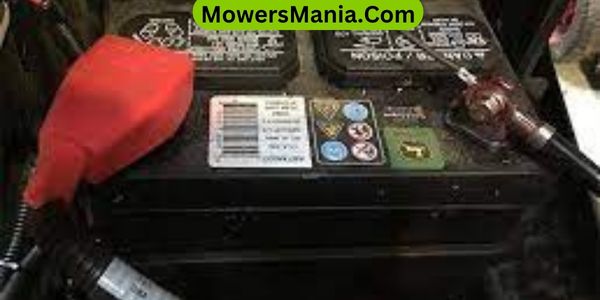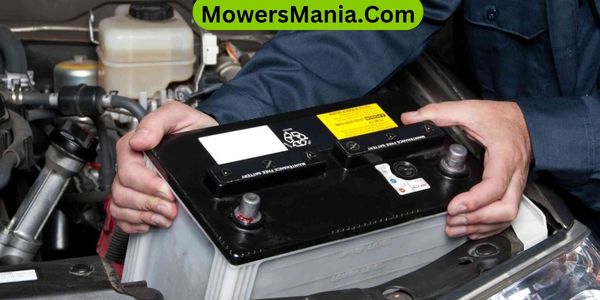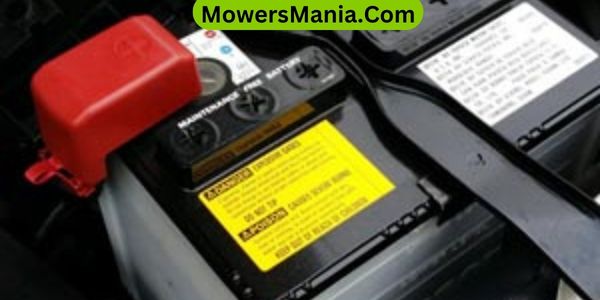You’ve just finished mowing your lawn, and your battery-powered mower conked out halfway through. Frustrating, right?
To avoid these interruptions, it’s crucial to maximize the lifespan and efficiency of your lawn mower battery. By following some simple tips and best practices, you can ensure that your battery lasts longer and provides consistent power for your lawn care needs.

From understanding the different battery types to proper maintenance and charging techniques, a little attention to detail can go a long way in getting the most out of your lawn mower battery.
Understanding Battery Types
To get the most out of your lawn mower battery, you need to understand the different types available and their specific advantages and limitations.
The two main types of lawn mower batteries are lead-acid and lithium-ion. Lead-acid batteries are the traditional choice, known for their reliability and affordability.
They’re well-suited for smaller lawn mowers with less demanding power needs. However, they require regular maintenance, such as checking the water levels and ensuring proper ventilation to avoid the build-up of hydrogen gas.
On the other hand, lithium-ion batteries are gaining popularity due to their lightweight and long-lasting performance. They’re maintenance-free and have a higher energy density, providing more power for a longer duration. However, they come with a higher price tag.
Understanding these differences will help you choose the right battery for your specific lawn mower and usage patterns. Whether you prioritize cost-effectiveness or long-term convenience, selecting the appropriate battery type is crucial for maximizing the performance and longevity of your lawn mower.
Maintenance Essentials
Regular maintenance is essential for maximizing the lifespan and performance of your lawn mower battery.
Start by keeping the battery and its terminals clean. Use a mixture of baking soda and water to clean any corrosion on the terminals, and ensure the connections are tight and free of debris.
Additionally, regularly check the electrolyte levels in your battery and top them off with distilled water as needed. It’s important to inspect the battery for any signs of damage or wear, such as leaks or cracks, and replace it if necessary.
Furthermore, make sure to store the battery in a cool, dry place during the off-season to prevent deterioration. Remember to recharge the battery fully before storing it and periodically throughout the off-season to maintain its charge.
Lastly, following the manufacturer’s guidelines for maintenance and charging will ensure that the battery operates at its best.
Charging Best Practices

Ensure that you regularly charge your lawn mower battery according to the manufacturer’s recommended guidelines to maintain its optimal performance.
When it comes to charging your battery, it’s essential to follow a few best practices.
Firstly, always use the charger specifically designed for your lawn mower battery. Using the wrong charger can damage the battery or lead to undercharging or overcharging, affecting its lifespan.
Additionally, it’s crucial to place the battery in a well-ventilated area while charging to prevent overheating. Remember to check the battery’s water levels if it’s not a maintenance-free model and top it off with distilled water if necessary before charging.
Furthermore, avoid storing the battery in a discharged state for extended periods, as this can lead to sulfation, reducing its overall capacity.
Lastly, make it a habit to inspect the battery and its connections for any signs of corrosion or damage before charging.
Storage Tips
When storing your lawn mower battery, always place it in a cool, dry location away from direct sunlight and extreme temperatures. This will help prolong the battery’s lifespan and maintain its performance.
Here are some storage tips to ensure your lawn mower battery stays in top condition:
- Cleanliness is key: Before storing your battery, make sure it’s clean and free from any dirt, debris, or corrosion. A clean battery is less likely to experience self-discharge and will be easier to inspect for any signs of damage when you take it out of storage.
- Disconnect the battery: If you’re storing the battery for an extended period, it’s best to disconnect it from the lawn mower. This prevents any potential drainage or parasitic load on the battery, which could lead to irreversible damage.
- Regular maintenance: Even when in storage, it’s important to periodically check the battery’s charge and recharge it if necessary. This will help prevent the battery from deep discharging, which can negatively impact its overall lifespan.
Troubleshooting Common Issues

If you notice that your lawn mower battery isn’t holding a charge, despite proper maintenance, it may be helpful to troubleshoot common issues to identify the root cause.
Start by checking the battery connections. Loose or corroded connections can disrupt the flow of power and lead to charging problems. Ensure that the battery terminals are clean and securely fastened to the mower.
Next, inspect the battery for physical damage such as cracks, leaks, or bulges, as these can indicate internal issues and may require battery replacement.
Additionally, assess the age of the battery. Over time, batteries naturally lose their ability to hold a charge, so if your battery is old, it might be time for a new one.
It’s also essential to examine the charging system, including the alternator and voltage regulator, as malfunctions in these components can impact the battery’s ability to charge properly.
If troubleshooting these common issues doesn’t resolve the problem, consider seeking professional assistance to diagnose and address more complex battery issues.
Frequently Asked Questions [FAQs]
Can I Use a Different Type of Battery in My Lawn Mower if I Can’t Find the Specific Type Recommended for My Model?
If you can’t find the specific battery recommended for your lawn mower model, it’s best to avoid using a different type. Using an incompatible battery can damage your mower and pose safety risks. Always follow manufacturer recommendations for best performance.
How Do I Dispose of an Old Lawn Mower Battery in an Environmentally Friendly Way?
To dispose of an old lawn mower battery in an environmentally friendly way, take it to a battery recycling center or a household hazardous waste facility. These places will ensure the battery is properly recycled or disposed of.
Is It Safe to Leave My Lawn Mower Battery Charging Unattended for Long Periods of Time?
Yes, it is generally safe to leave your lawn mower battery charging unattended for long periods of time. However, it’s always a good idea to check the manufacturer’s guidelines to ensure safe charging practices.
Can Extreme Temperatures, Such as Very Hot or Very Cold Weather, Affect the Lifespan of My Lawn Mower Battery?
Extreme temperatures can significantly affect the lifespan of your lawn mower battery. Very hot or cold weather can cause the battery to deteriorate faster. Store it in a cool, dry place and avoid exposing it to extreme temperatures.
Are There Any Specific Safety Precautions I Should Take When Handling or Maintaining My Lawn Mower Battery?
When handling or maintaining your lawn mower battery, always wear gloves and eye protection. Clean the battery terminals regularly with a mixture of baking soda and water to prevent corrosion. Never smoke near the battery.
Conclusion
Now that you know how to take care of your lawn mower battery, you can ensure it lasts longer and performs at its best.
By understanding the type of battery you have, performing regular maintenance, and following charging and storage best practices, you can avoid common issues and keep your lawn mower running smoothly.
With these tips, you’ll get the most out of your battery and enjoy a well-maintained lawn all season long.



